– By Paranjay Sharma

Introduction
The Cold War ushered in a new era of political, scientific, and technological achievements known as the Space Age. The Space Age saw the rapid development of aeronautical capabilities, including artificial satellites, unmanned space probes, and human spaceflight, between the United States and the Soviet Union. Nevertheless, a space race spawned by the Cold War is still afoot.
With developments in technology, the concept of the battlefield has been altered, and there is mounting evidence that space is being used to demonstrate space power and security. During peace and war, space has evolved into an all-encompassing domain capable of molding, modifying, synchronizing, coordinating, controlling, and monitoring communication and surveillance. In recent years, several countries, most notably the United States, Russia, and China, have made significant investments in offensive-defensive counter-space capabilities.
The fact that many states are developing and testing anti-satellite weapons (ASATs) has triggered an escalating loop that threatens to pave the way for the weaponization of space and, eventually, its transformation into a battlefield.
Anti-Satellite Weapons: A Conceptual Understanding
As per the ‘Space Dossier’, a series of reports on outer space security by the United Nations Institute for Disarmament Research (UNIDIR), ASATs are any capabilities aimed at destroying or disabling space assets for any reason, whether military or civilian, offensive, or defensive.
ASATs can be used in a variety of ways. For instance, kinetic energy ASATs (KE-ASATs) destroy satellites by colliding with them at high speeds. Ballistic missiles, drones that drag an object out of orbit or detonate explosives near the object, and any item launched to coincide with the passage of a target satellite are all examples of KE-ASATs. This means that any space asset, including a communications satellite, might be used to destroy another space object and become an ASAT physically.
Non-kinetic ASATs, on the other hand, use any non-physical means to disable a satellite, such as using lasers to blind satellites, launching cyberattacks, or jamming frequencies. These approaches can likewise render an object worthless without causing the target to break up and split and does not require any physical force to cripple them.
Other ASAT capabilities include cyber-attacks on space system assets, Electro-Magnetic Pulse (EMP) explosion devices, directed energy (laser-based) weapons and co-orbital ASATs.
Space Mayhem: A Look at Space Warfare Capabilities of Nations
Since the early years of the Cold War, the US and the Soviet Union have been experimenting with offensive space weapons. However, it has only been in the last 10-15 years that the projection of space power has grown to the point that the vulnerability of vital space-based assets and the potential for space as a warfighting domain has climbed to the top of the national security agenda of every nation.
The earliest ASAT testing began during the Cold War when the Soviet Union launched its first satellite, Sputnik, in October 1957. In response, the United States created the ‘Bold Orion’ or Weapons System 199 (WS-199B) – the first successful demonstration of an ASAT. The Soviet Union replied with its own ASAT programme, creating co-orbital weaponry in the 1960s and 1970s. As time went by, technological prowess enabled these nations to develop razor-sharp KE-ASATs and Non-Kinetic ASATs to sabotage enemies’ space-bound targets.
Here is a picture of ASAT weapons in the hands of the leading spacefaring nations:
- United States:
In October 1959, the United States conducted its first anti-satellite test termed the ‘Bold Orion’. A developmental Air-Launched Ballistic Missile (ALBM) was carried by a US Air Force B-47 bomber and was fired at an Explorer VI satellite. The United States further developed space-borne weapons and conducted various tests to bolster their ASAT capability.
- The 1960s – In the early sixties, the US tested the Nike-Zeus missile as the first US direct-ascent ASAT development program, designated Programme 505. It used a ground ballistic missile tipped with a nuclear warhead. Later, the Department of Defense approved developing the second direct-ascent system, the Air Force Thor missiles, designated Program 437. This gave it the capacity to reach satellites at higher altitudes, perhaps 400 miles, than Zeus, which could only reach satellites at 100-150 miles.
- The 1980s – In the eighties, the US announced the new generation ASAT weapon. The idea was that in a high-speed impact, the missile would rise to a target satellite in low earth orbit and kill or disable it. In 1985, the US demonstrated its space power with an F-15 fighter firing an ASM-135 missile to destroy a satellite used for solar observation.
- The 2000s – In 2008, a RIM 161 Standard Missile 3 was fired from the Aegis class cruiser by the US Navy to destroy the malfunctioning US spy satellite USA-193. The operation was termed “Burnt Frost” and was the last known ASAT test by the US.
- Russia:
The erstwhile Soviet Union relied on co-orbital ASAT weapons. This entailed sending a ‘killer satellite’ into the same orbit as its intended target and approaching it for destruction. In 1963, the Soviet Union officially announced Polyot-1. After the successful initial launch in November 1963, Soviet killer satellites were tested in secret for the rest of the 1960s.
- 1970-90s – The Soviet Union in the seventies launched the ‘Istrebitel Sputnikov’ anti-satellite weapons programme, wherein the killer satellite consisted of a kill vehicle and a launch vehicle based on an ICBM (R-36). However, in the eighties, the programme slowed down. Yet, the engineers kept working on enhancements of the operating killer satellites and much larger and more terrifying projects, including terrifying ideas to use orbital combat stations and even laser weaponry. In 1993, Boris Yeltsin pulled the plug off the programme, marking the end of the killer satellites.
- 2000s – In the 2000s, the Russian anti-satellite programme showed indications of life once more. On 18th November 2015, several open sources reported the testing of the new Russian ASAT missile called Nudol, which operates as a direct ascent missile system to take on target satellites in kinetic kill mode. Recently, Russia executed a direct-ascent anti-satellite (DA-ASAT) test on 15th November 2021, destroying one of its space objects in low-earth orbit, a defunct satellite. The test drew worldwide attention and was widely criticized as dangerous and irresponsible because of the produced uncontrollable debris. The PL-19 Nudol system was used in the demonstration, an anti-ballistic missile interceptor that can also be employed as a direct-ascent anti-satellite weapon.
- China:
According to open sources, China is building its ASAT capabilities fastest among the major spacefaring nations. According to reports, Chinese ASAT weapons have been developing since 1964 (Programme 640). The Chinese military conducted the first such KE-ASAT test on 11th January 2007, wherein an SC 19 missile was launched, destroying the Fengyun-1C (FY-1C) weather satellite.
The Dong Neng 2 (DN -2) ASAT interceptor test, which took place in May 2013, caused quite a stir internationally. It was described as an ASAT system capable of entering deep space and threatening target satellites over various analysts’ entire altitude range of geo-centric orbits. Later, in 2018 the Chinese also conducted the Dong Neng-3 hit-to-kill midcourse interceptor test, which experts said could also act as an ASAT platform.
Reportedly, China is also developing its soft-kill capability (high power lasers and microwave weapons) and microsatellites to advance its ASAT programme.
- India:
India has built its ASAT capabilities and conducted a successful ASAT test under the Mission Shakti initiative in March 2019. The test involved sending a ballistic missile to destroy an Indian satellite (Mircorsat-R) in low earth orbit (LEO). The KE-ASAT missile destroyed the satellite in under three minutes rather than causing a warhead-induced explosion due to the sheer impact of the collision. India has converted its Prithvi Defense Vehicle Mark-II missile defence interceptor into an ASAT weapon, making it the fourth country to demonstrate direct ascent kinetic kill capabilities.
India’s Mission Shakti has undoubtedly catapulted India into an elite four of countries with ASAT capabilities, cementing it as a prominent player in space and enhancing its deterrence posture. While this ASAT test is not an exception, it does offer a ray of optimism for India’s future strategic path in establishing its space power.
Conclusion
No weapons have yet been deployed in space. The US, Russia, China & India have demonstrated razor-sharp anti-satellite capabilities and are actively spending funds in bolstering their offensive-defensive capabilities in space. The rapid militarization of space does, however, pose a threat to the whole of humankind. If we keep moving at this current rate, a world without communications, smartphones, navigation, internet, GPS, global connect, planetary data sharing, and more may be closer than we think. The need of the hour is to ensure a responsible and safe ecosystem for space exploration and unrestricted access to a peaceful space for future generations. It is critical to revive the concept of space as a global commons for humanity’s overall well-being.
References :
A History of Anti-Satellite Programs by Laura Grego, Union of Concerned Scientists, Available at: https://www.ucsusa.org/sites/default/files/2019-09/a-history-of-ASAT-programs_lo-res.pdf
Anti-Satellite Weapons and the Emerging Space Arms Race by Talia M. Blatt, Harvard International Review, Available at: https://hir.harvard.edu/anti-satellite-weapons-and-the-emerging-space-arms-race/
Anti-Satellite Weapons: A Likely Future Trajectory by Lt Gen (Dr) Vijay Kumar Saxena (Retd), PVSM, AVSM, VSM, Vivekananda International Foundation, Available at: https://www.vifindia.org/sites/default/files/anti-satellite-weapons-a-likely-future-trajectory.pdf
Space Power and Space Warfare: A Review by Pranav R Satyanath, Takshashila Review Paper, Available at: https://takshashila.org.in/wp-content/uploads/2019/12/TRP-Space_Power_Warfare-PRS-2019-02-1.pdf
Weaponisation and Militarisation of Space by PN Tripathi, CLAWS Winter Journal 2013, Available at: https://indianarmy.nic.in/WriteReadData/Documents/Weaponisation.pdf





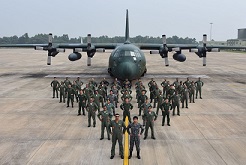











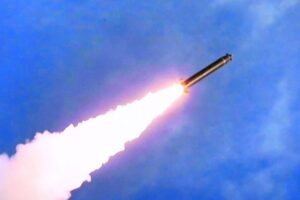















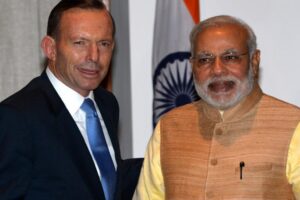





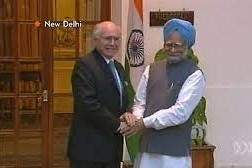




















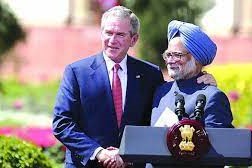





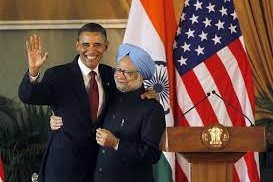



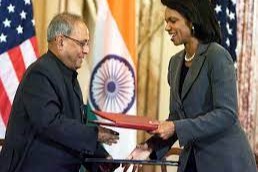









 onducted a total of five underground nuclear tests, breaking a 24-year self-imposed moratorium on nuclear testing. Pakistan followed, claiming 5 tests on May 28, 1998, and an additional test on May 30. The unannounced tests created a global storm of criticism, as well as a serious setback for decades of U.S. nuclear nonproliferation efforts in South Asia. On May 13, 1998, President Clinton imposed economic and military sanctions on India, mandated by Section 102 of the Arms Export Control Act (AECA), and applied the same sanctions to Pakistan on May 30. Some effects of the sanctions on India included: termination of $21 million in FY1998 economic development assistance; postponement of $1.7 billion in lending by the International Financial Institutions (IFI), as supported by the Group of Eight (G-8) leading industrial nations; prohibition on loans or credit from U.S. banks to the government of India; and termination of Foreign Military Sales under the Arms Export Control Act. Humanitarian assistance, food, or other agricultural commodities are excepted from sanctions under the law.
onducted a total of five underground nuclear tests, breaking a 24-year self-imposed moratorium on nuclear testing. Pakistan followed, claiming 5 tests on May 28, 1998, and an additional test on May 30. The unannounced tests created a global storm of criticism, as well as a serious setback for decades of U.S. nuclear nonproliferation efforts in South Asia. On May 13, 1998, President Clinton imposed economic and military sanctions on India, mandated by Section 102 of the Arms Export Control Act (AECA), and applied the same sanctions to Pakistan on May 30. Some effects of the sanctions on India included: termination of $21 million in FY1998 economic development assistance; postponement of $1.7 billion in lending by the International Financial Institutions (IFI), as supported by the Group of Eight (G-8) leading industrial nations; prohibition on loans or credit from U.S. banks to the government of India; and termination of Foreign Military Sales under the Arms Export Control Act. Humanitarian assistance, food, or other agricultural commodities are excepted from sanctions under the law. 
















 The first ministerial level meeting of QUAD was held on the sidelines of the United Nations General Assembly in New York. Before this, the QUAD had
The first ministerial level meeting of QUAD was held on the sidelines of the United Nations General Assembly in New York. Before this, the QUAD had AusIndEx is an exercise between India and Australia which was first held in 2015.The Australian
AusIndEx is an exercise between India and Australia which was first held in 2015.The Australian 







 On recommendations of the Japanese government, the four countries met at Manila, Philippines for ASEAN Regional Forum (ARF) originally, but also ended up having a meeting of what we call the first meeting of four nation states on issues of
On recommendations of the Japanese government, the four countries met at Manila, Philippines for ASEAN Regional Forum (ARF) originally, but also ended up having a meeting of what we call the first meeting of four nation states on issues of  On his official visit to India, Japanese PM Mr. Shinzo Abe reinforced the ties of two nations, i.e., Japan and India with his famous speech about
On his official visit to India, Japanese PM Mr. Shinzo Abe reinforced the ties of two nations, i.e., Japan and India with his famous speech about  In 2007, Japanese President Shinzo Abe resigned from his post citing health reasons. This had a significant impact on QUAD as he was the architect & advocate of QUAD. His successor, Yasuo Fukuda, did not take up QUAD with such zeal leading to dormancy of the forum. (
In 2007, Japanese President Shinzo Abe resigned from his post citing health reasons. This had a significant impact on QUAD as he was the architect & advocate of QUAD. His successor, Yasuo Fukuda, did not take up QUAD with such zeal leading to dormancy of the forum. ( Japan earthquake and tsunami of 2011, also called Great Sendai Earthquake or Great Tōhoku Earthquake, was a 9.0 magnitude earthquake which struck below the floor of the Western Pacific at 2:49 PM. The powerful earthquake affected the northeastern coast of Honshu, Japan’s main island, and also initiated a series of large tsunami waves that devastated coastal areas of Japan, which also led to a major nuclear accident. Japan received aid from India, US, Australia as well as other countries. US Navy aircraft carrier was dispatched to the area and Australia sent search-and-rescue teams.
Japan earthquake and tsunami of 2011, also called Great Sendai Earthquake or Great Tōhoku Earthquake, was a 9.0 magnitude earthquake which struck below the floor of the Western Pacific at 2:49 PM. The powerful earthquake affected the northeastern coast of Honshu, Japan’s main island, and also initiated a series of large tsunami waves that devastated coastal areas of Japan, which also led to a major nuclear accident. Japan received aid from India, US, Australia as well as other countries. US Navy aircraft carrier was dispatched to the area and Australia sent search-and-rescue teams.  India and Australia signed the
India and Australia signed the  The India-Japan Agreement for Cooperation in the Peaceful Uses of Nuclear Energy was signed on 11 November, 2016 and came into force on 20 July, 2017 which was representative of strengthening ties between India and Japan. Diplomatic notes were exchanged between Dr. S. Jaishankar and H.E. Mr. Kenji Hiramatsu, Ambassador of Japan to India. (
The India-Japan Agreement for Cooperation in the Peaceful Uses of Nuclear Energy was signed on 11 November, 2016 and came into force on 20 July, 2017 which was representative of strengthening ties between India and Japan. Diplomatic notes were exchanged between Dr. S. Jaishankar and H.E. Mr. Kenji Hiramatsu, Ambassador of Japan to India. ( The foreign ministry
The foreign ministry The Officials of QUAD member countries met in Singapore on November 15, 2018 for consultation on regional & global issues of common interest. The main discussion revolved around connectivity, sustainable development, counter-terrorism, maritime and cyber security, with the view to promote peace, stability and prosperity in the
The Officials of QUAD member countries met in Singapore on November 15, 2018 for consultation on regional & global issues of common interest. The main discussion revolved around connectivity, sustainable development, counter-terrorism, maritime and cyber security, with the view to promote peace, stability and prosperity in the  The 23rd edition of trilateral Malabar maritime exercise between India, US and Japan took place on 26 September- 04 October, 2019 off the coast of Japan.
The 23rd edition of trilateral Malabar maritime exercise between India, US and Japan took place on 26 September- 04 October, 2019 off the coast of Japan.  After the first ministerial level meeting of QUAD in September, 2019, the senior officials of US, Japan, India and Australia again met for consultations in Bangkok on the margins of the East Asia Summit. Statements were issued separately by the four countries. Indian Ministry of External Affairs said “In statements issued separately by the four countries, MEA said, “proceeding from the strategic guidance of their Ministers, who met in New York City on the sidelines of the UN General Assembly recently, the officials exchanged views on ongoing and additional practical cooperation in the areas of connectivity and infrastructure development, and security matters, including counterterrorism, cyber and maritime security, with a view to promoting peace, security, stability, prosperity in the Indo-Pacific region.”
After the first ministerial level meeting of QUAD in September, 2019, the senior officials of US, Japan, India and Australia again met for consultations in Bangkok on the margins of the East Asia Summit. Statements were issued separately by the four countries. Indian Ministry of External Affairs said “In statements issued separately by the four countries, MEA said, “proceeding from the strategic guidance of their Ministers, who met in New York City on the sidelines of the UN General Assembly recently, the officials exchanged views on ongoing and additional practical cooperation in the areas of connectivity and infrastructure development, and security matters, including counterterrorism, cyber and maritime security, with a view to promoting peace, security, stability, prosperity in the Indo-Pacific region.” US 2+2 Ministerial Dialogue was held on 18 December, 2019, in Washington DC. Secretary of State Michael R. Pompeo and Secretary of Defense Mark T. Esper will host Indian Minister of External Affairs Dr. S. Jaishankar and Minister of Defense Shri Rajnath Singh. The discussion focussed on deepening bilateral strategic and defense cooperation, exchanging perspectives on global developments, and our shared leadership in the Indo-Pacific region.The two democracies signed the Industrial Security Annex before the 2+2 Dialogue. Assessments of the situation in Afghanistan, Pakistan, Nepal, Sri Lanka, and the Indian Ocean region in general were shared between both countries. (
US 2+2 Ministerial Dialogue was held on 18 December, 2019, in Washington DC. Secretary of State Michael R. Pompeo and Secretary of Defense Mark T. Esper will host Indian Minister of External Affairs Dr. S. Jaishankar and Minister of Defense Shri Rajnath Singh. The discussion focussed on deepening bilateral strategic and defense cooperation, exchanging perspectives on global developments, and our shared leadership in the Indo-Pacific region.The two democracies signed the Industrial Security Annex before the 2+2 Dialogue. Assessments of the situation in Afghanistan, Pakistan, Nepal, Sri Lanka, and the Indian Ocean region in general were shared between both countries. ( The foreign ministers of QUAD continued their discussions from the last ministerial level meeting in 2019, on 6 October, 2020. While there was no joint statement released, all countries issued individual readouts. As per the issue readout by India, the discussion called for a coordinated response to the challenges including financial problems emanating from the pandemic, best practices to combat Covid-19, increasing the resilience of supply chains, and enhancing access to affordable vaccines, medicines and medical equipment. There was also a focus on maintaining stability in the Indo-Pacific region amidst growing tensions. Australian media release mentions “We emphasised that, especially during a pandemic, it was vital that states work to ease tensions and avoid exacerbating long-standing disputes, work to counter disinformation, and refrain from malicious cyberspace activity. Ministers reiterated that states cannot assert maritime claims that are inconsistent with international law, particularly the United Nations Convention on the Law of the Sea (UNCLOS).”
The foreign ministers of QUAD continued their discussions from the last ministerial level meeting in 2019, on 6 October, 2020. While there was no joint statement released, all countries issued individual readouts. As per the issue readout by India, the discussion called for a coordinated response to the challenges including financial problems emanating from the pandemic, best practices to combat Covid-19, increasing the resilience of supply chains, and enhancing access to affordable vaccines, medicines and medical equipment. There was also a focus on maintaining stability in the Indo-Pacific region amidst growing tensions. Australian media release mentions “We emphasised that, especially during a pandemic, it was vital that states work to ease tensions and avoid exacerbating long-standing disputes, work to counter disinformation, and refrain from malicious cyberspace activity. Ministers reiterated that states cannot assert maritime claims that are inconsistent with international law, particularly the United Nations Convention on the Law of the Sea (UNCLOS).” On September 24, President Biden hosted Prime Minister Scott Morrison of Australia, Prime Minister Narendra Modi of India, and Prime Minister Yoshihide Suga of Japan at the White House for the first-ever in-person Leaders’ Summit of the QUAD. The leaders released a Joint Statement which summarised their dialogue and future course of action. The regional security of the Indo-Pacific and strong confidence in the ASEAN remained on the focus along with response to the Pandemic.
On September 24, President Biden hosted Prime Minister Scott Morrison of Australia, Prime Minister Narendra Modi of India, and Prime Minister Yoshihide Suga of Japan at the White House for the first-ever in-person Leaders’ Summit of the QUAD. The leaders released a Joint Statement which summarised their dialogue and future course of action. The regional security of the Indo-Pacific and strong confidence in the ASEAN remained on the focus along with response to the Pandemic.  The QUAD Vaccine Partnership was announced at the first QUAD Summit on 12 March 2021 where QUAD countries agreed to deliver 1.2 billion vaccine doses globally. The aim was to expand and finance vaccine manufacturing and equipping the Indo-Pacific to build resilience against Covid-19. The launch of a senior-level QUAD Vaccine Experts Group, comprised of top scientists and officials from all QUAD member governments was also spearheaded.
The QUAD Vaccine Partnership was announced at the first QUAD Summit on 12 March 2021 where QUAD countries agreed to deliver 1.2 billion vaccine doses globally. The aim was to expand and finance vaccine manufacturing and equipping the Indo-Pacific to build resilience against Covid-19. The launch of a senior-level QUAD Vaccine Experts Group, comprised of top scientists and officials from all QUAD member governments was also spearheaded.  Although the Tsunami Core group had to be disbanded on fulfilment of its purpose, however the quadrilateral template that formed remained intact as a successful scaffolding of four countries, as stated by authors Patrick Gerard Buchan and Benjamin Rimland in their diplomatic brief about QUAD ( you can access the brief at
Although the Tsunami Core group had to be disbanded on fulfilment of its purpose, however the quadrilateral template that formed remained intact as a successful scaffolding of four countries, as stated by authors Patrick Gerard Buchan and Benjamin Rimland in their diplomatic brief about QUAD ( you can access the brief at  Secretary of State Colin Powell stated that the Core Tsunami Group was to be disbanded and folded and clubbed with the broader United Nations led Relief Operations. In a Tsunami Relief Conference in Jakarta, Secretary Powell stated that
Secretary of State Colin Powell stated that the Core Tsunami Group was to be disbanded and folded and clubbed with the broader United Nations led Relief Operations. In a Tsunami Relief Conference in Jakarta, Secretary Powell stated that  Soon after the Earthquake and Tsunami crisis, humanitarian reliefs by countries, viz., US, India, Japan, and Australia started to help the 13 havoc-stricken countries. The US initially promised $ 35 Millions in aid. However, on 29
Soon after the Earthquake and Tsunami crisis, humanitarian reliefs by countries, viz., US, India, Japan, and Australia started to help the 13 havoc-stricken countries. The US initially promised $ 35 Millions in aid. However, on 29 At 7:59AM local time, an earthquake of 9.1 magnitude (undersea) hit the coast of Sumatra, an Indonesian island. As a result of the same, massive waves of Tsunami triggered by the earthquake wreaked havoc for 7 hours across the Indian Ocean and to the coastal areas as far away as East Africa. The infamous Tsunami killed around 225,000 people, with people reporting the height of waves to be as high as 9 metres, i.e., 30 feet. Indonesia, Srilanka, India, Maldives, Thailand sustained horrendously massive damage, with the death toll exceeding 200,000 in Northern Sumatra’s Ache province alone. A great many people, i.e., around tens of thousands were found dead or missing in Srilanka and India, mostly from Andaman and Nicobar Islands of Indian territory. Maldives, being a low-lying country, also reported casualties in hundreds and more, with several non-Asian tourists reported dead or missing who were vacationing. Lack of food, water, medicines burgeoned the numbers of casualties, with the relief workers finding it difficult to reach the remotest areas where roads were destroyed or civil war raged. Long-term environmental damage ensued too, as both natural and man-made resources got demolished and diminished.
At 7:59AM local time, an earthquake of 9.1 magnitude (undersea) hit the coast of Sumatra, an Indonesian island. As a result of the same, massive waves of Tsunami triggered by the earthquake wreaked havoc for 7 hours across the Indian Ocean and to the coastal areas as far away as East Africa. The infamous Tsunami killed around 225,000 people, with people reporting the height of waves to be as high as 9 metres, i.e., 30 feet. Indonesia, Srilanka, India, Maldives, Thailand sustained horrendously massive damage, with the death toll exceeding 200,000 in Northern Sumatra’s Ache province alone. A great many people, i.e., around tens of thousands were found dead or missing in Srilanka and India, mostly from Andaman and Nicobar Islands of Indian territory. Maldives, being a low-lying country, also reported casualties in hundreds and more, with several non-Asian tourists reported dead or missing who were vacationing. Lack of food, water, medicines burgeoned the numbers of casualties, with the relief workers finding it difficult to reach the remotest areas where roads were destroyed or civil war raged. Long-term environmental damage ensued too, as both natural and man-made resources got demolished and diminished.
No responses yet